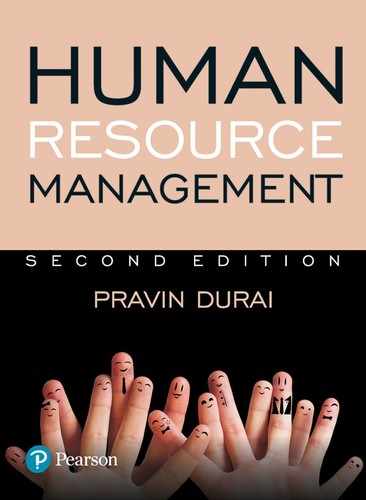APPENDIX C
Knowledge Management
Introduction
Knowledge management is a process that aims at identifying and capturing the knowledge that exists across the organization. It may be defined as the systematic and active management of ideas, information, and knowledge residing in an organization’s employees.1 Knowledge may include databases, documents, policies, procedures, and people’s expertise and experience. Knowledge management looks to fulfil the information needs of the business effectively and rapidly by systematically and comprehensively gathering, storing, analysing, and distributing necessary information. Knowledge management, thus, focuses on the creation of an environment that facilitates the development and sharing of people’s knowledge and their capacity to act.
Now, there is a widespread recognition among the companies about the ability of knowledge management to solve the organizational problems better, tackle the changing business requirements effectively, and survive disruptive changes such as labour turnover, etc. Companies require knowledge management to systematically capture, refine, organize, and maintain organizational knowledge for faster and cost-effective resolution of queries.
Effective knowledge management can help an organization in reducing the time required for information search by employees and also ensures better business decisions throughout the organization. It also helps the organization in gaining a competitive advantage over the rivals in the business.
Uses of Knowledge Management
Knowledge management, which involves people, technology, and processes, aims at continuous discovery and effective usage of an organization’s explicit knowledge (available on paper, in documents, and databases) and tacit knowledge (people’s skills, experience, talents, etc.). Knowledge management as a technique offers the following benefits:
- Knowledge management helps the organization in creating a value from its intangible assets such as people’s experience, expertise, and other information sources.
- It involves the classification and categorization of information and also allows the members of the organization to have faster accessibility to such information.
- It enables the organization to compete in the market on the basis of the strength of its employees’ knowledge.
- It facilitates the process of bringing right knowledge to the right people at the right time with the aim of improving organizational performance and productivity.2
- It compels the managers to learn new technologies, new measures, and new opportunities to keep the organization fit and competitive.
There is a growing realization among the companies that the success in competition does not depend on the mere possession of physical assets but on their ability to deploy and exploit knowledge tactically.
Notes
- Efraim Turban, Jay E. Aronson, Teng-Peng Liang and Ramesh Sharda, Decision Support and Business Intelligence Systems, 8th ed. (New Delhi: Pearson Education, 2007) p. 481.
- Carla S. O’Dell, Nilly Essaides, Nilly Ostro (Contributor) and C. Grayson (Preface), If Only We Knew What We Know: The Transfer of Internal Knowledge and Best Practices, (New York: Free Press, 1998).
